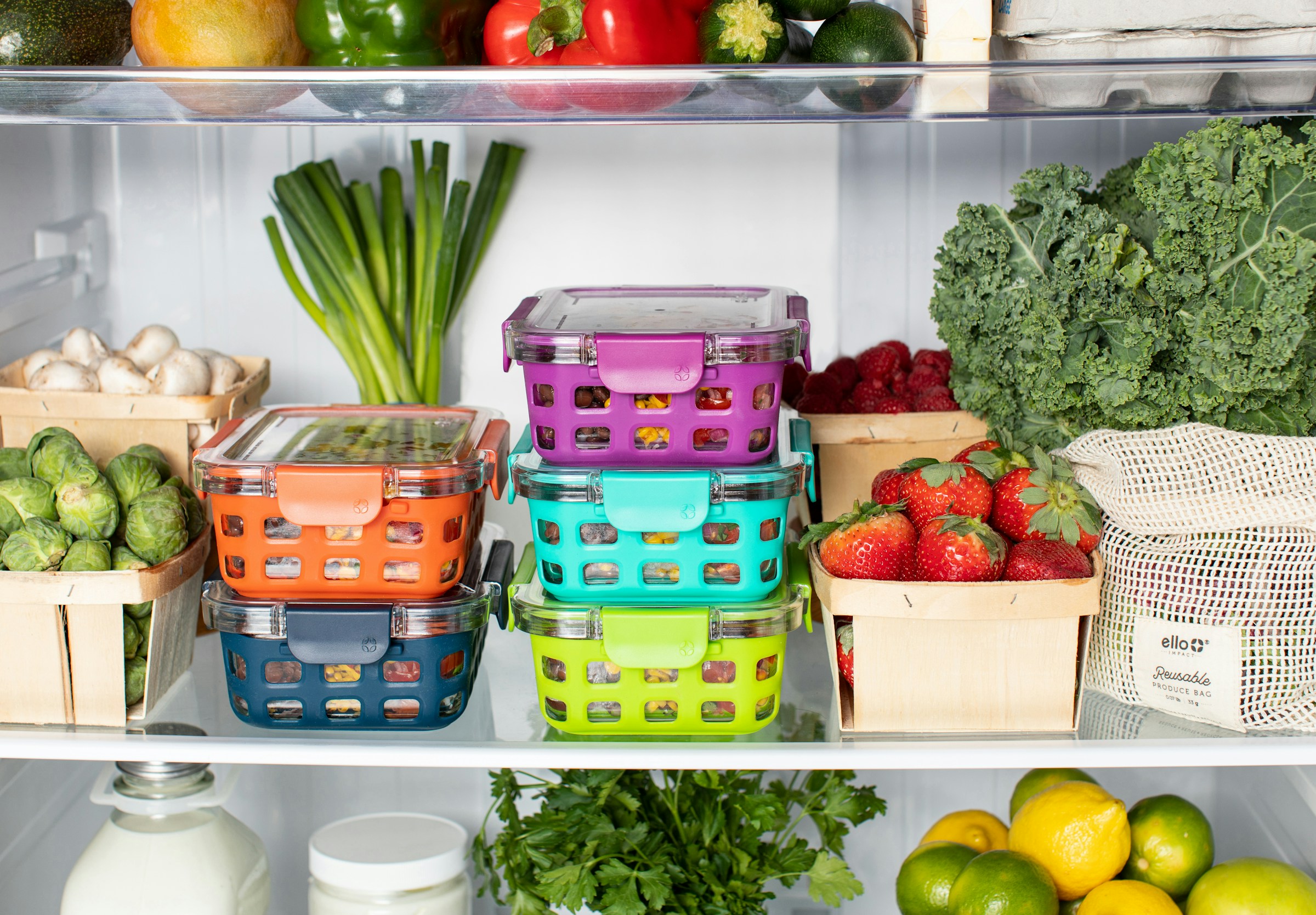As you navigate your way around your kitchen, filling your cart with fresh produce, you might be unaware of the significant role that humidity and temperature play in the quality of your food. It is a common misconception that the refrigerator is a universal storage solution for all foods. However, varying levels of temperature and humidity in your storage units can either prolong or reduce the lifespan of your fruits and vegetables. This article aims to enlighten you on the importance of humidity control and proper temperature regulation in food storage, and how implementing these tips can help you keep your foods fresh for a longer period.
Understanding Humidity and its Role in Food Storage
Humidity refers to the concentration of water vapor present in the air. It is a crucial factor to consider when storing your food. Depending on the type of food, high humidity can aid in preserving freshness. For other types of food, however, high humidity could lead to rapid spoilage.
Also to read : What are the best underfloor heating options for a ceramic tiled kitchen?
Fruits and vegetables, for instance, require certain humidity levels to keep them fresh. Those stored in high humidity conditions will stay fresh for a longer period since the moist environment prevents them from drying out and losing their original texture. Conversely, low humidity causes food to dehydrate, leading to wilting and shriveling.
The Importance of Temperature Control in Food Storage
Temperature also plays a pivotal role in food preservation. Many foods are sensitive to heat and can easily spoil when exposed to high temperatures. The ideal temperature for storing most fruits and vegetables is between 40 and 45 degrees Fahrenheit. At this range, the ripening process slows down, giving you more time to consume your produce before it goes bad.
Also read : How can you utilize IoT devices to enhance kitchen safety?
Your refrigerator’s crisper drawer is designed to control temperature and humidity. It keeps the air cool to slow down the ripening process and has adjustable humidity controls for optimal food preservation. Some models even have separate compartments for fruits and vegetables, as each requires different humidity levels.
How to Store Fruits and Vegetables for Optimal Freshness
When storing fruits and vegetables, it’s important to separate those that produce ethylene gas from those that are sensitive to it. Ethylene-producing fruits like apples, bananas, and tomatoes can cause other produce to ripen and spoil faster. For this reason, they should be stored separately.
Most vegetables prefer a high-humidity environment. This keeps them from losing moisture and becoming spongy or wilted. Your refrigerator’s crisper drawer is the best place to store these types of vegetables. Examples include leafy greens, broccoli, and carrots.
On the other hand, most fruits prefer a low-humidity environment. This helps slow down the ripening process and keeps them fresh for a longer period. Fruits such as apples, berries, and grapes will fare well in a low-humidity crisper drawer.
How to Control Humidity and Temperature in Your Storage Units
Now that you understand how temperature and humidity can affect your food’s lifespan, it’s essential to learn how to control these variables in your storage units. As mentioned earlier, your refrigerator’s crisper drawer has humidity controls that can be adjusted depending on the type of food you’re storing.
For high-humidity storage, you can fully close the window of your crisper drawer. This prevents moisture from escaping, keeping the environment inside the drawer moist. This is ideal for storing most vegetables.
For low-humidity storage, you can keep the window of your crisper drawer partially open. This lets some moisture escape, creating a drier environment that’s ideal for storing most fruits.
As for temperature control, most refrigerators operate at a temperature below 40 degrees Fahrenheit. However, the temperature inside your refrigerator may vary. The upper shelves tend to be warmer than the lower shelves and the back of the refrigerator. Storing foods properly according to their temperature needs can significantly help prolong their shelf lives.
Also, avoid overstocking your refrigerator as it can hinder the circulation of cold air, leading to uneven cooling. Make sure there’s enough space for air to flow freely to ensure all foods are kept at the right temperature.
By understanding the unique needs of each food type and adjusting your storage practices accordingly, you can make your fresh produce last longer, reduce waste, and save money. It’s not just about what food you buy, but how well you store them.
The Role of a Root Cellar in Food Preservation
A root cellar, as rustic as it may seem, is an effective solution for food storage with ideal temperature and humidity conditions. Traditionally, root cellars were used to store root vegetables, fruits, and fermented foods like pickles and sauerkraut. The natural insulation provided by the earth helps to maintain a constant temperature and humidity level, making it a viable option for food preservation.
The temperature in a root cellar is typically between 32 and 40 degrees Fahrenheit, while the humidity level ranges from 85 to 95 percent, making it ideal for storing fruits and vegetables over the winter. The high humidity prevents the food from drying out and the cooler temperatures slow the ripening process, allowing the produce to maintain its freshness for a longer time.
Root cellars can be designed in various ways to suit your needs. They can be as simple as a hole in the ground with a cover or a more elaborate structure with shelves and a ventilation system. Regardless of the design, the main elements of a good root cellar are temperature and humidity control.
For optimal food preservation, it is important to regularly monitor the temperature and humidity levels in your root cellar. The use of a digital hygrometer or a temperature monitoring device can help you maintain the right conditions in the root cellar. Ensure proper air circulation within the root cellar by installing ventilation pipes. This can help control the humidity levels and keep your food fresh longer.
The Impact of Proper Food Storage on Shelf Life and Food Waste
By understanding the optimal temperature and humidity levels for food storage, you can significantly increase the shelf life of your fruits and vegetables, reducing food waste and saving money. The USDA estimates that up to 30% of food is wasted at the retail and consumer levels. A significant portion of this waste is attributed to improper storage leading to spoilage.
The surest way to minimize waste is to apply proper storage techniques for your food. In addition to the right temperature and humidity, the storage conditions should also be clean to prevent the growth of bacteria that can cause foodborne illnesses. Also, it’s advisable to store foods in order of their expiration dates – a method known as First In, First Out (FIFO). This means consuming foods with the nearest expiry date before those with later dates.
Moreover, avoid overloading your crisper drawers. Overcrowding can hinder air circulation, leading to inconsistent temperature and humidity levels and, consequently, food spoilage. Optimize the use of your fridge and root cellar, and remember not to store ethylene-producing fruits with those sensitive to it.
Conclusion
In conclusion, maintaining the appropriate temperature and humidity levels is crucial in preserving the freshness and quality of your food. The refrigerator and root cellar are two key storage solutions that, when utilized properly, can help reduce food waste and save money. So, the next time you bag a shop full of fresh produce, remember that the way you store them in your kitchen plays a significant role in their shelf life. Make applicable adjustments in your storage units, monitor the temperature and humidity levels, and ensure proper air circulation. Remember, food storage is not just about where you place your food, but about creating the ideal conditions for each type of food to thrive.






